We Happy Few has a masterfully crafted setting with top notch writing and competent art direction. However, even though it nails the tone and delivery it does not save the game from feeling poorly designed and overpriced.
Steam: Released
Type: Single-player
Genre: Action Adventure
Developer: Compulsion Games
Publisher: Gearbox Publishing
Release date: 11 Aug, 2018


We Ignorant Few
Much like We Happy Few’s starting protagonist I missed my chance to catch the train everyone else was getting aboard. I missed the Kickstarter when it happened. I heard of the E3 trailers but I never saw them. Similarly, I caught wind of the Early Access build releasing to a mixed reception but felt no hurry to see it for myself. The hype train left the station, I heard the whistle, and out of the corner of my eye I noticed it go past, taking along with it my opportunity to get invested and build my hopes up.
There was a point when members of the game industry turned against the idea of demos. Before a customer plays a game, it has the potential to be perfect and their imagination paints a picture of exactly what they desire the game to be. A demo shatters that image without first having the customer invest in whatever the game actually is. When the question was raised of who at SaveOrQuit would review We Happy Few, some of the more senior writers had already seen the poor reception for the game and thus offered it up to someone on the staff with a less skewed viewpoint for an objective review. Their idyllic visions of what the game could be had already been compromised, smashed against the rocky shores of reality.
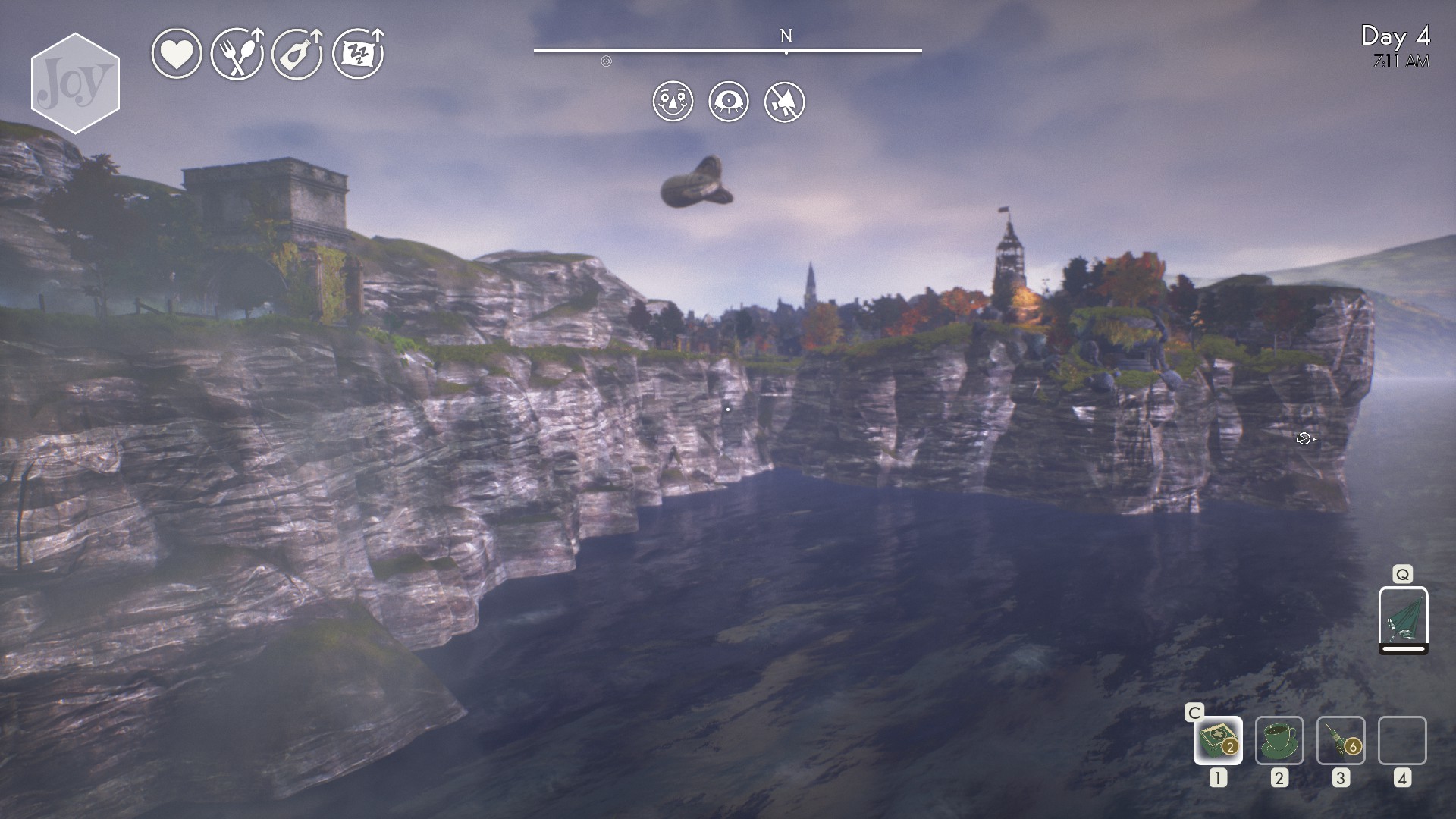
It is only fitting that it was ignorance that lead to me raising my hand and volunteering to give We Happy Few a fair shake, for blissful ignorance is a theme that resonates with the game in more ways than the developer even intended. The game is set in alternative history 1960s England in which Germany won World War 2 and extracted a heavy price on the town of Wellington Wells, which thanks to a designer drug (Joy) that suppresses negative emotions and memories, now exists in a blissful stupor, ignorant of the horrors of their past.
This is, of course, a dystopia that is just posing as a utopia. Most of the citizenry is complicit in this façade, nobody wants to remember what they did and they see taking joy as “choosing happiness” over misery and guilt. Naturally, they resent anyone trying to drag them down and forcing them to face reality, to the point the entire criminal justice system revolves around identifying these “downers” and exiling them from the rainbow streets of the main town to slum it in the rural island districts that used to function as the town’s outskirts.
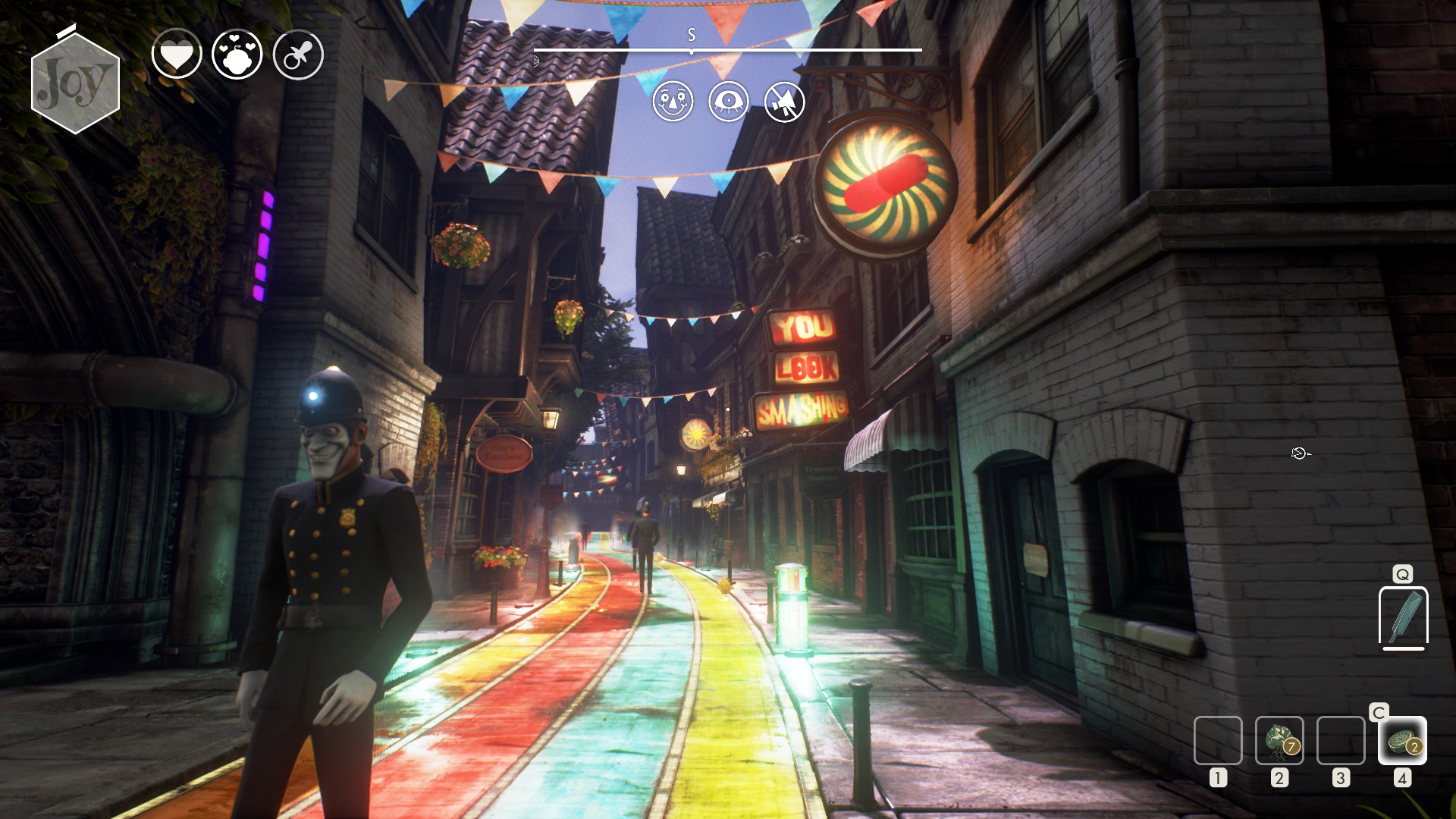
Here the game shows us the other side of the coin with these second-class citizens being dumped outside of town and forced to fend for themselves, forming a separate society of wastrels. Most of them, at one point, received a bad batch of Joy which made it so the drug no longer works for them. Many would voluntarily resume taking it if they could and resent those that still can. Forced to remember what they did, some have gone mad leading to some interesting visual storytelling set pieces scattered around the game. Others are just resigned to sadness or bitterness and mope around doing the bare minimum to survive.
The player needs to learn to fit in within these two starkly different hostile environments as they follow the story of the game’s three protagonists. These three characters forge the game’s story as they choose to eschew taking Joy in favour of facing reality in order to pursue their own personal objectives. As one character’s arc ends the next takes over, changing up the play-style for the next act of the overarching narrative. This serves as a convenient plot device for introducing the player to the game’s world by effectively starting them as an amnesiac who must piece together their memories and figure out how the world works as they go.
Smile or Die
As with most dystopian narratives, the game is trying to make a direct commentary on societal issues. In the case of We Happy Few it casts a shadow on the trend in modern corporate culture to push an ideology of compulsory happiness. It is no coincidence the game is set in the 1960s when we saw the real-world cult of positive thinking rise up as the West recovered from the Great Depression.
Almost everyone who has ever worked in an office environment in any capacity has had to sit through more than one meeting/workshop on the subject of staying positive. ‘Smile and the world smiles back at you’ is the go-to catchphrase of the movement. When things aren’t going well you “have to” stay optimistic. You “must” maintain good cheer if you want things to improve and good things to happen to you. Being a misery-gut only invites more negativity into your life.
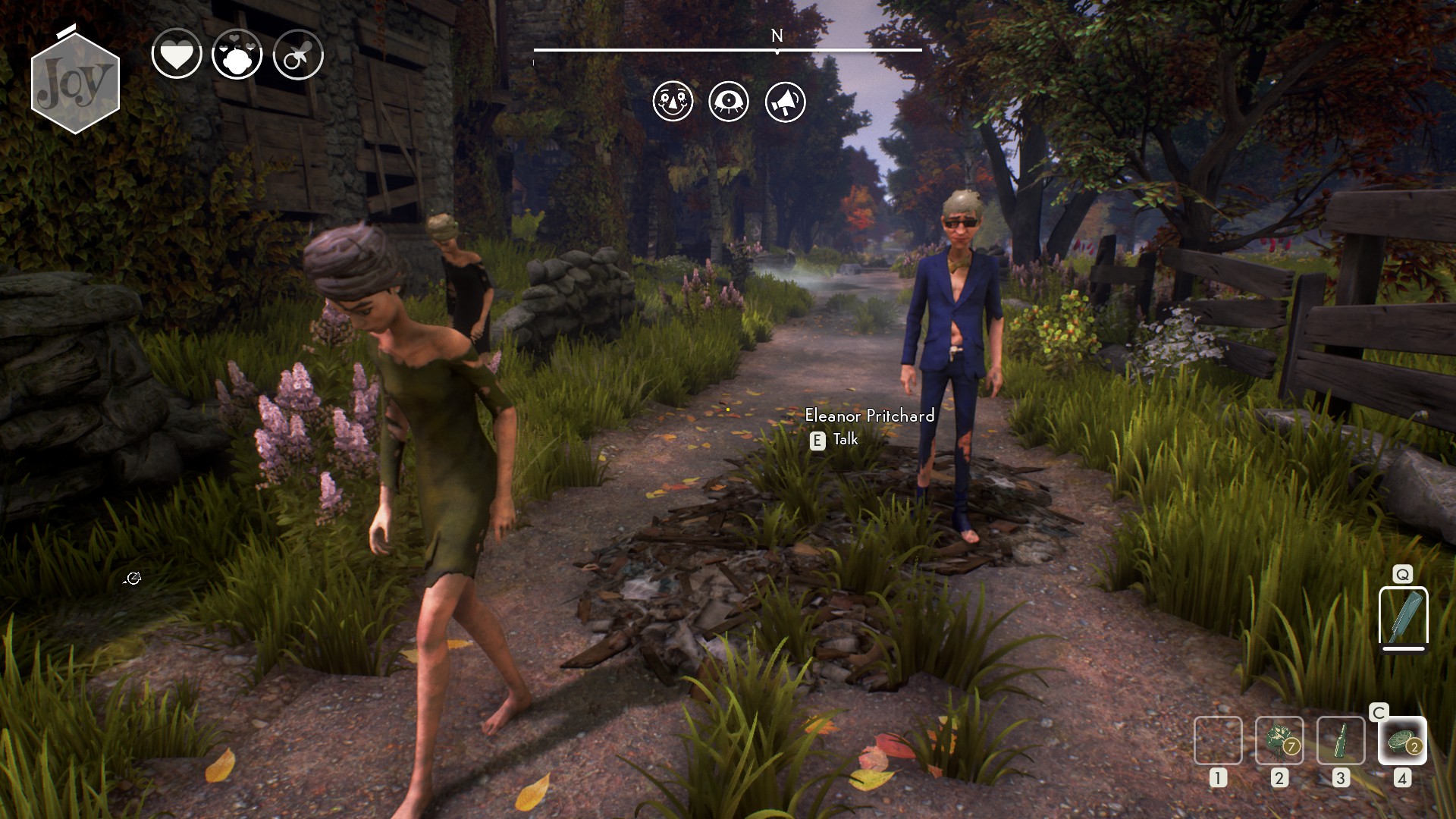
Of course, in reality, this is complete nonsense. Modern science shows this attitude was one of the contributing factors to the spike in clinical depression and only serves to compound issues and make people feel worse. We all know not to bottle up anger so it is really bizarre how readily society accepted the idea it is healthy to bottle up sadness. The question of how this ideology became so widespread is, in fact, something We Happy Few tackles right in its very premise.
Many who subscribe to a “smile or die” culture don’t actually believe in it. They play along because they feel like they don’t have a choice. There are many companies where the sentiment is ‘just because you are feeling down in the dumps doesn’t mean you need to drag everyone else down with you and hurt productivity’. More than this, company leaders don’t want to feel questioned and so those naysayers who point out the negatives in any given proposal will frequently be passed over for promotion in favour of yes men who keep the positive vibes going.
Perhaps more impressively, despite its dystopian setting, the game recognises this issue doesn’t just stem from big bad corporations. There is a lot of symbology in the game which depicts the broader societal issues that contribute to the problem. The painted-on masks every character wears are an overt reference to how we all wear masks and hide our true emotions. Slightly more subtle is the theme of censorship, not just in the sense of the government regulating what it deems appropriate for citizens to see, but more generally in how we censor ourselves to others.
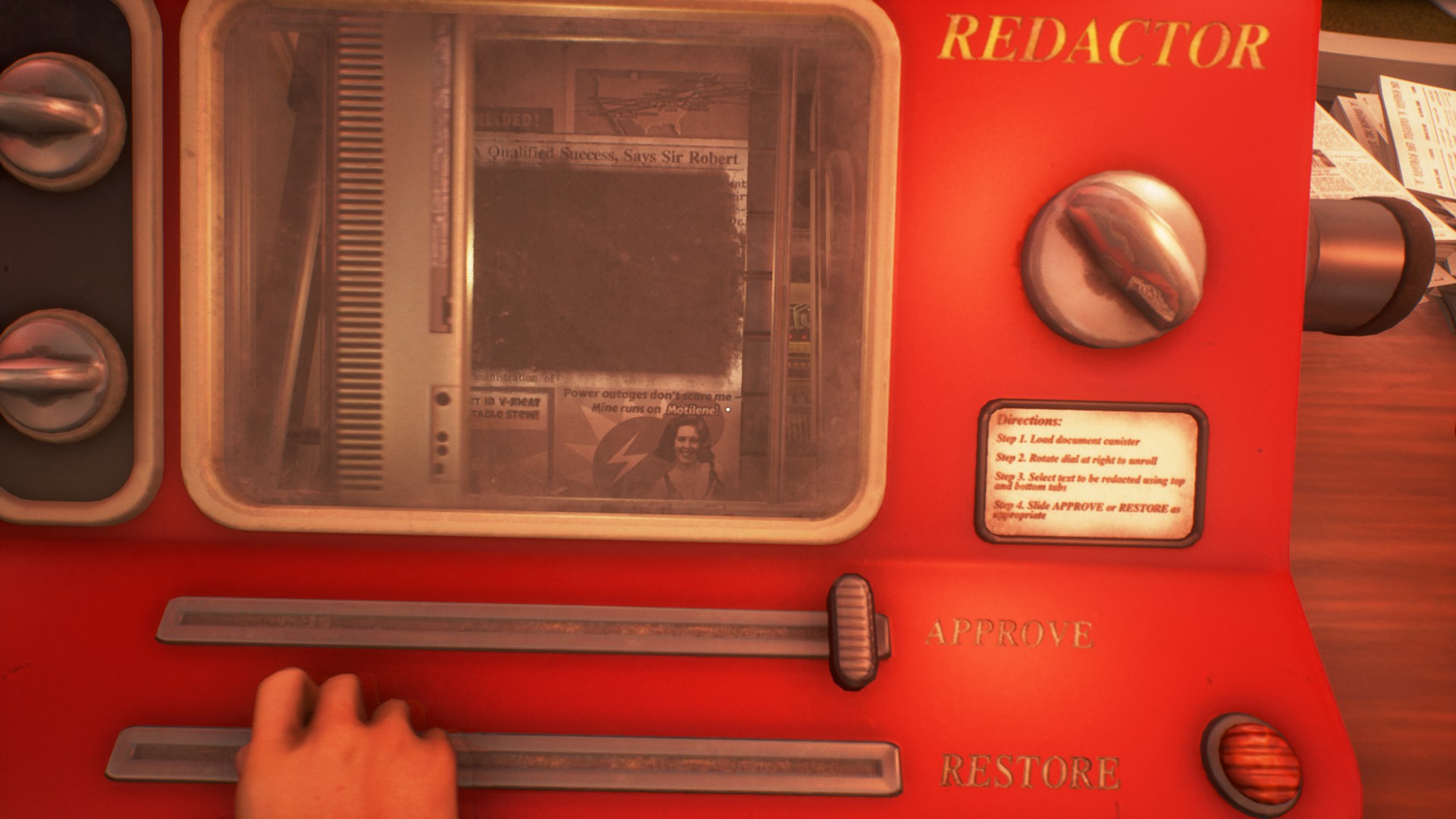
A rising hot topic of late is the concern amongst psychology specialists that social media is acting as an amplifier for that self-censorship. As we fill our Facebook walls and Instagram feeds with snippets of the highlights of our day we filter out the negatives (of ourselves anyway) and paint an image of how great our life is to our friends. Then when we see their feeds showing us the same thing “the grass is always greener” complex kicks in as we begin to see their highlights and think how great their life is while knowing ours is actually filled with turmoil.
Youth today are faced with the imagery of impossible fantasy lives being presented as the daily norm. On top of this with the internet documenting every public mistake they make, they are never allowed to forget something dumb they posted or any comments they made thoughtlessly or in anger. Even if they learn better, that shadow is held over them so it becomes even more important to censor themselves when interacting online. That ever-present pressure to compartmentalise the emotions they put forward online has much the same effect in our social lives as it does in the workplace.
We are constantly expected to put on a happy face and even when that expectation isn’t forced upon us we try to put out best foot forward and portray ourselves as leading enchanted lives as we are afraid to show the flaws. Meanwhile, depression looms just below the surface. Setting We Happy Few in 1960s England was the obvious choice to portray this. One of the character traits in the skills-screen flat out describes your character as repressed as any British person from that era would be. It is a statement about living in fear of ever been seen, doing, or saying something inappropriate. Such an embarrassment is was worse than death. Best to sweep all such incidents under the covers and in We Happy Few, that’s what they do.
Red Pill or Blue?
Then we have the use of Joy in the game, what does that represent? Is it an antidepressant? Is it alluding to the idea that as a society we overmedicate? I don’t think so. For a brief time, the game was banned here in Australia. The Australian classification board is notoriously strict when it comes to how drugs are portrayed in the game. The criteria which qualified We Happy Few to be refused classification was Joy causing hallucinogenic like effects while also making parts of the game easier for the player, allowing them to access parts of the game they otherwise couldn’t.
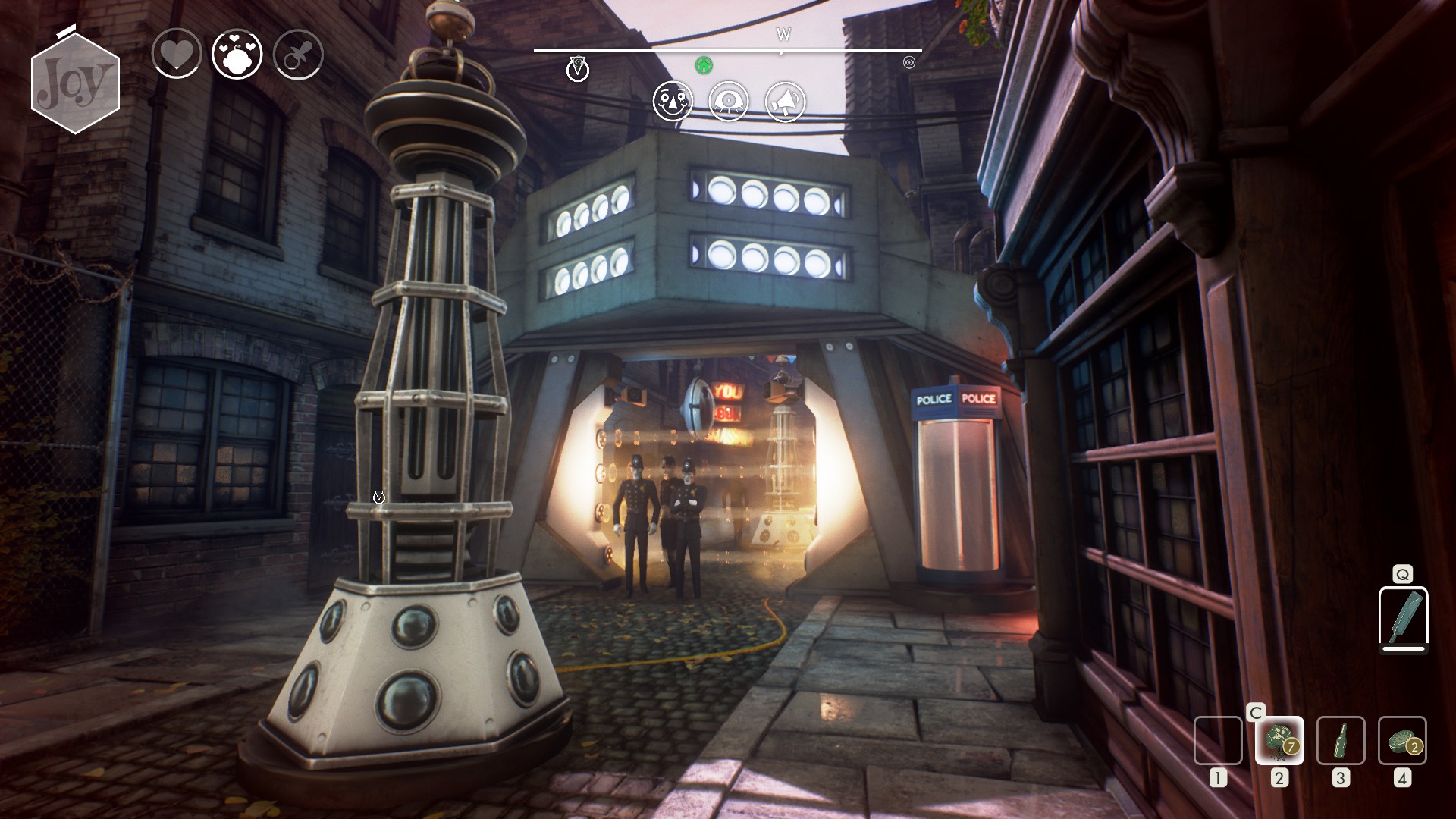
This refers to the checkpoints in the game, different parts of the city are gated off and you must pass through a scanner which detects if there is Joy in your system or not to make sure you aren’t a wastrel trying to sneak into town and bring everyone down. Your character, of course, doesn’t want to be on Joy as it distracts them from their goals. More importantly, Joy has some rather detrimental withdrawal effects making those moments where you have to use it to proceed quite unappealing. Eventually, the Australian Classification Board was convinced that the context mattered more than the immediate game mechanics and We Happy Few was not, in fact, advocating or glorifying the taking of narcotics and granted it classification.
So in that regard Joy is portrayed as a narcotic. Antidepressants typically have strong side effects and there are many people for which these do not subside. In many cases, it’s a matter of matching the right medication to the right person, but with no ironclad criteria for doing so many doctors are forced to rely on trial and error. It is tempting to compare Joy to antidepressants in this way by drawing on the fact the wastrels are unable to take it due to the side effects. But with antidepressants the side effects are immediate and you must wait to see if they subside before trying a new variety.
Joy is portrayed as having worked for everybody with a select few having its effects diminish for them much later, leaving them forever chasing the dragon. In this regard, it is portrayed much more as an addictive narcotic. It is also worth pointing out that no less than 5 minutes into the game it is made abundantly clear Joy is used as a suppressant to make the citizens on Wellington Wells compliant.
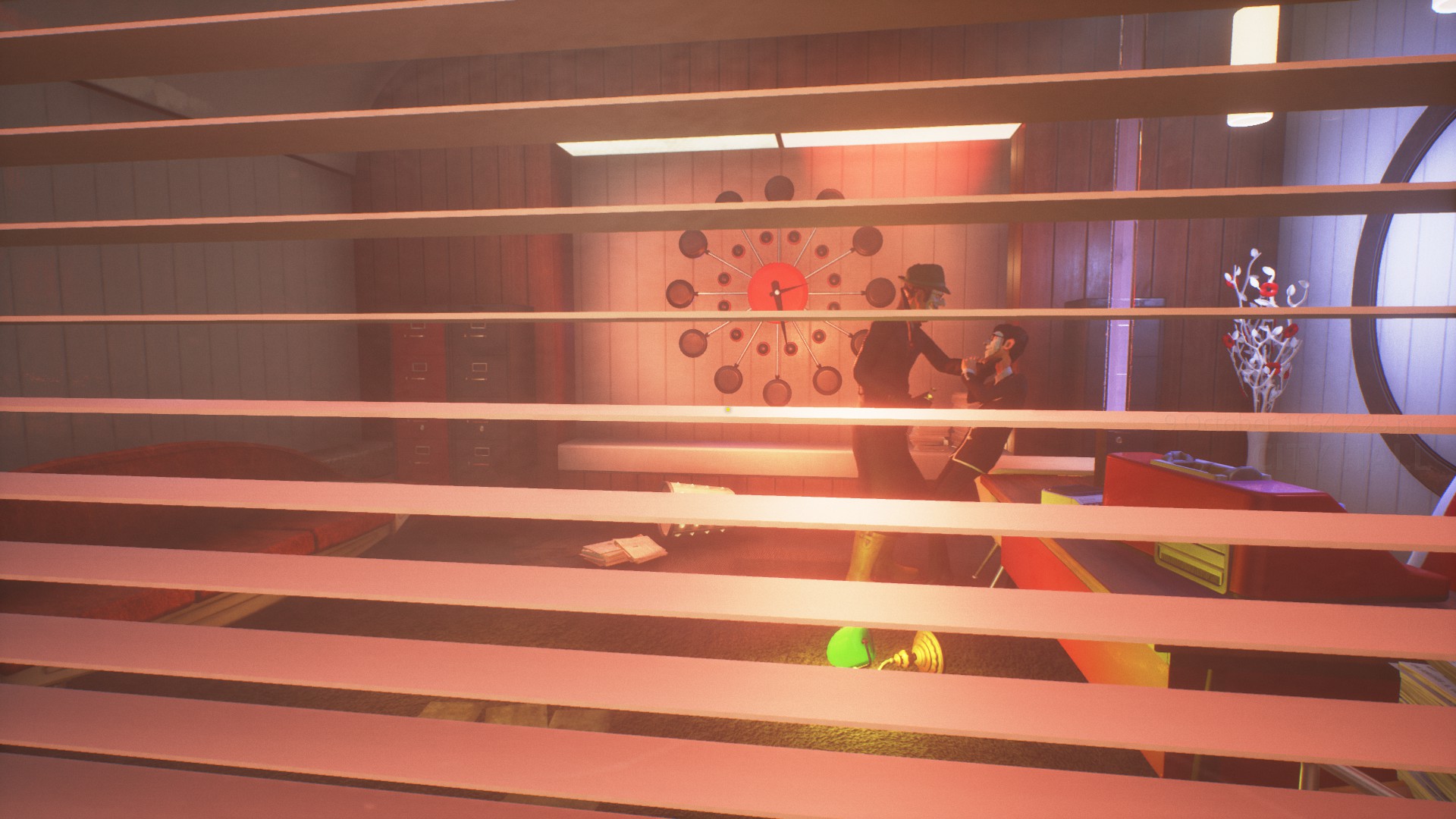
Also worth mentioning is that in the era in which the game is set, the practice of lobotomising people had not yet ceased. The idea of lobotomising grief-stricken women who had lost their children at war was once considered quite normal practice. It’s not overt but there is an allusion to that in the game. The concept of lobotomising someone just so they stop causing a bother is one case where reality is rather darker than fiction.
What really makes the game dystopian though is the very idea of such a powerfully addictive narcotic being administered as a suppressant to keep people in line by government mandate. Anyone who has spent time around a mental hospital knows the imagery behind such an idea. It’s a chilling concept and a weighty issue for the game to tackle, thankfully due to the strength of the narrative, it manages to hold up.
Seek Help
I would like to interject at this point that as someone who has suffered and fought with depression in the past I am strongly against the culture or suppressing your emotions and hiding your difficulties from the world. As such I highly approve of the game tackling the issue and casting light on the matter. I personally find the struggle of the protagonists to fit in relatable, while at the same time their fight to liberate themselves from such a regime is quite uplifting.
If the topic has raised emotions for you then you should know that you don’t need to suppress them and face them alone. Whether it’s depression or anxiety, if you are suffering I would encourage you to seek help. Wherever you are in the world there are numerous organisations set up to help you take steps towards leading a healthier happier life. You don’t have to pretend to feel better because someone tells you that you have to. But you can take steps to feel better because you want to.
USA: https://adaa.org/
Canada: https://cmha.ca/
UK: https://www.mind.org.uk/
AUS: https://www.beyondblue.org.au/
International: Wiki List of World Wide Crisis Lines
What Happens when an Artist hasn’t Mastered a Medium
There is nothing spectacular about the game’s graphics but the art direction works. The slight stylisation of everything disguises the fact everything looks like it was made for the previous generation of consoles. But the most important thing about the artwork in this game is that it serves its purpose of setting the appropriate tone well. A task which it absolutely nails. The feelings the visuals evoke are spot on ranging from horrifying, bleak and dismal, to rich and colourful but perhaps the most impressive thing is the way that even in the city walking through the pastel streets high on Joy there is still this subtle bleak undertone pervading everything like grim overcast skies at the carnival.
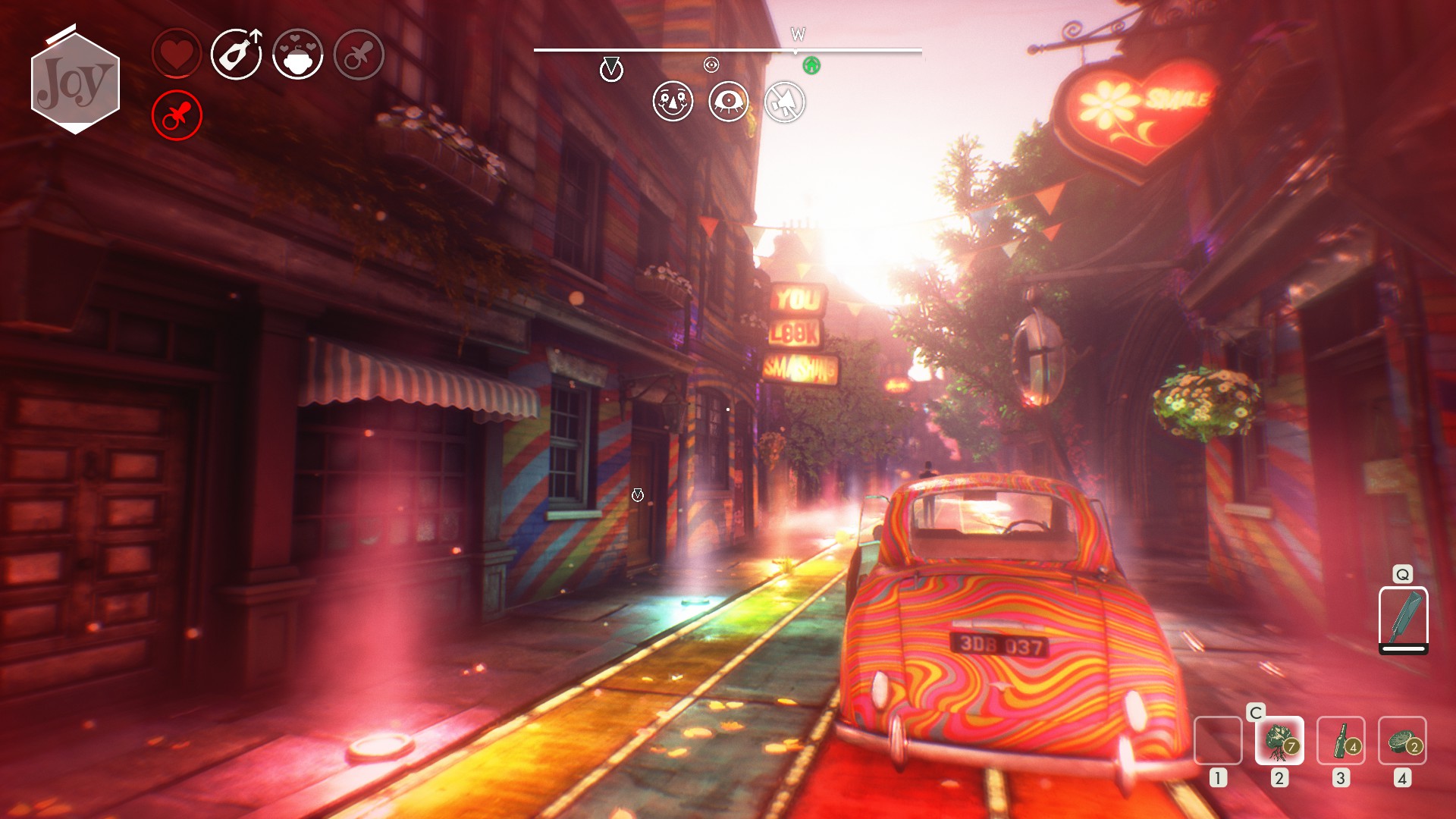
The writers of We Happy Few hit the mark again and again. The story is as interesting as it is well told. Actors deliver the lines well and everything pieces together nicely. The characters are realised well, the setting is carefully fleshed out. Even in the background world building, anywhere you find a set piece or a bit of side narrative that leaves you with questions, further exploration will provide you with answers.
Early on there is a real sense of tension when you explore the abandoned buildings, examining the wreckage of people’s lives as they descend into madness. You explore, unsure if the lunatic responsible is nearby all while creepy music plays over a gramophone on a floor above you. Like seeing a monster in a monster film, the tension fades once you’ve explored a few such set pieces, met a few wastrels, fought some real enemies and got a feel for what is actually a threat in the game. But those early encounters are quite evocative.
I found myself frequently stopping to listen to the pre-recorded propaganda pieces they had playing on a loop at various points throughout the story. They are an excellent parody of real-world PSAs and yet they don’t feel like parodies in the context of the game. Making educational videos entertaining to watch is no small feat in itself, the fact they also organically fit the fictional setting so well shows real talent.
Little feats of artistry like this are scattered all throughout the game. Whatever controversy surround the game one thing you can’t take away from the development team is the various creatives behind it are masters of their craft. They didn’t just come up with an original and eye-catching concept for the game, they worked hard and skilfully to make sure it was beautifully realised. It’s just shame that apparently none of them really knew how to do that properly in the medium of video games.
Video games are an incredibly powerful and flexible medium. Player agency adds something to the mix no other medium has. Telling a story through a character that is not bound to a linear path is a double-edged blade, the difficulty is in controlling the pacing. It is a good thing so much of the tone and setting is on point for the player to examine at their leisure. While the delivery of the main narrative starts strong, the further you progress into the story the more and more the game drops the ball on the pacing.
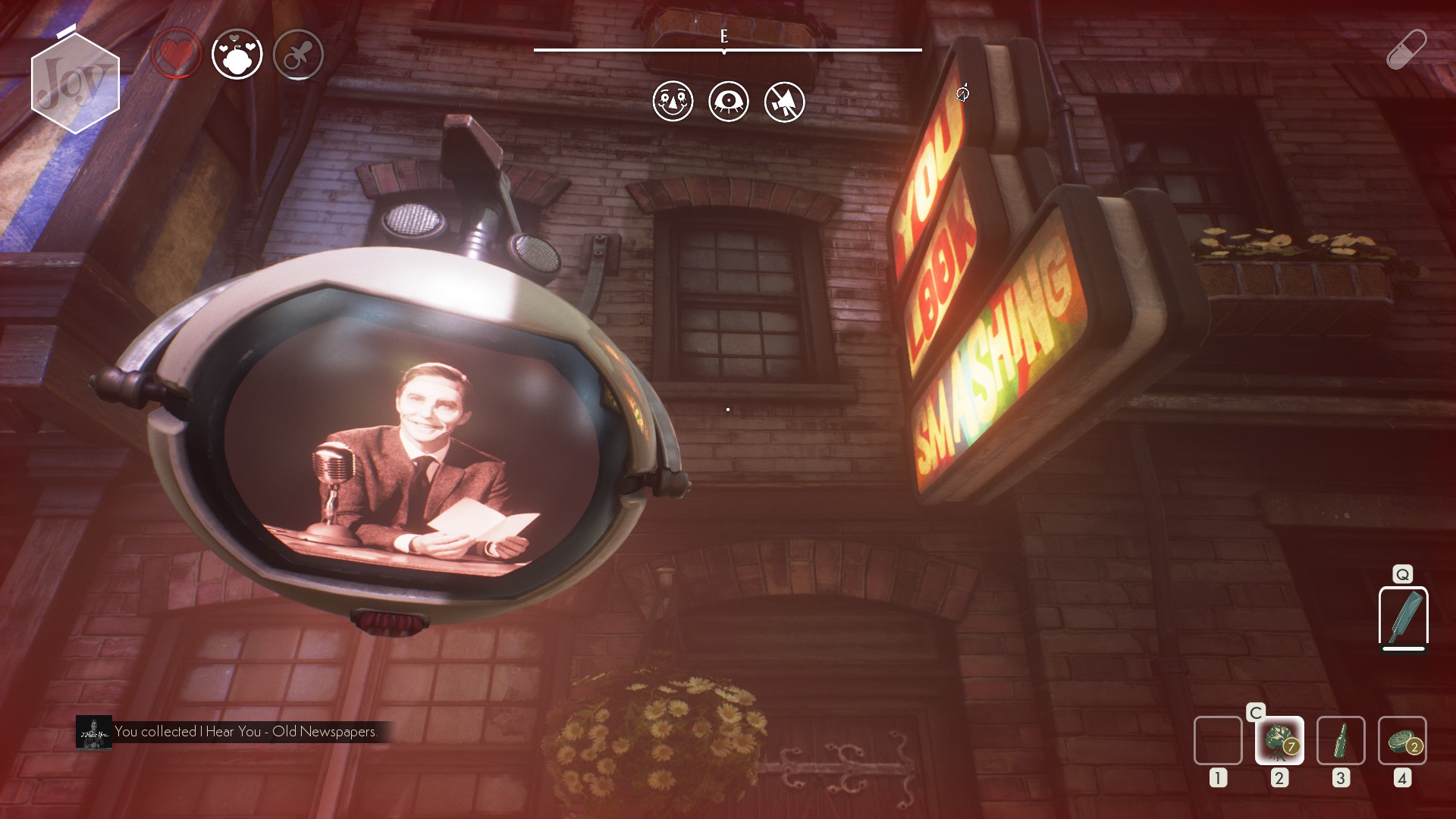
While exploring and piecing together the story is a strong part of the appeal, there are some logic fails in the design of various sections of the game where you can walk right past key story elements without engaging them, then get locked out of that section of the game forever forcing you to proceed while missing key references.
Perhaps more bewildering is leaving the speed of progression through various story quests in the game at the mercy of a random number generator. As talented as the various creative behind the world of We Happy Few is, it is a shame to say the same really can’t be said for the game designers and programmers as getting the timing wrong on a few things is the least of the game’s problems.
When is a Game Not a Game?
Procedural generation gets a bad rap. People complain you can’t generate anything as intricate and compelling as a hand-crafted scenario when the truth is procedural generation is just a tool and the intricacy is proportional to the work put into applying it well. So it always upsets me to see a dev use it as a half-arsed method of expanding their game world. It especially infuriating in We Happy Few’s case as I can’t rationalise a good reason as to why they did so.
There is more than enough content in the game for it to not need padding out with generic filler. The fact the game not only does this but overdoes it to the point it is an outright hindrance is utterly baffling. As excellent as the writing is, the quest design is often less than commendable, devolving at points to basic fetch quests. That would be tolerable on occasion except there are instances where the game has generated maps that mean those fetch quests boil down to running cross country from A to B and back again with some such trips taking more than 20 minutes.
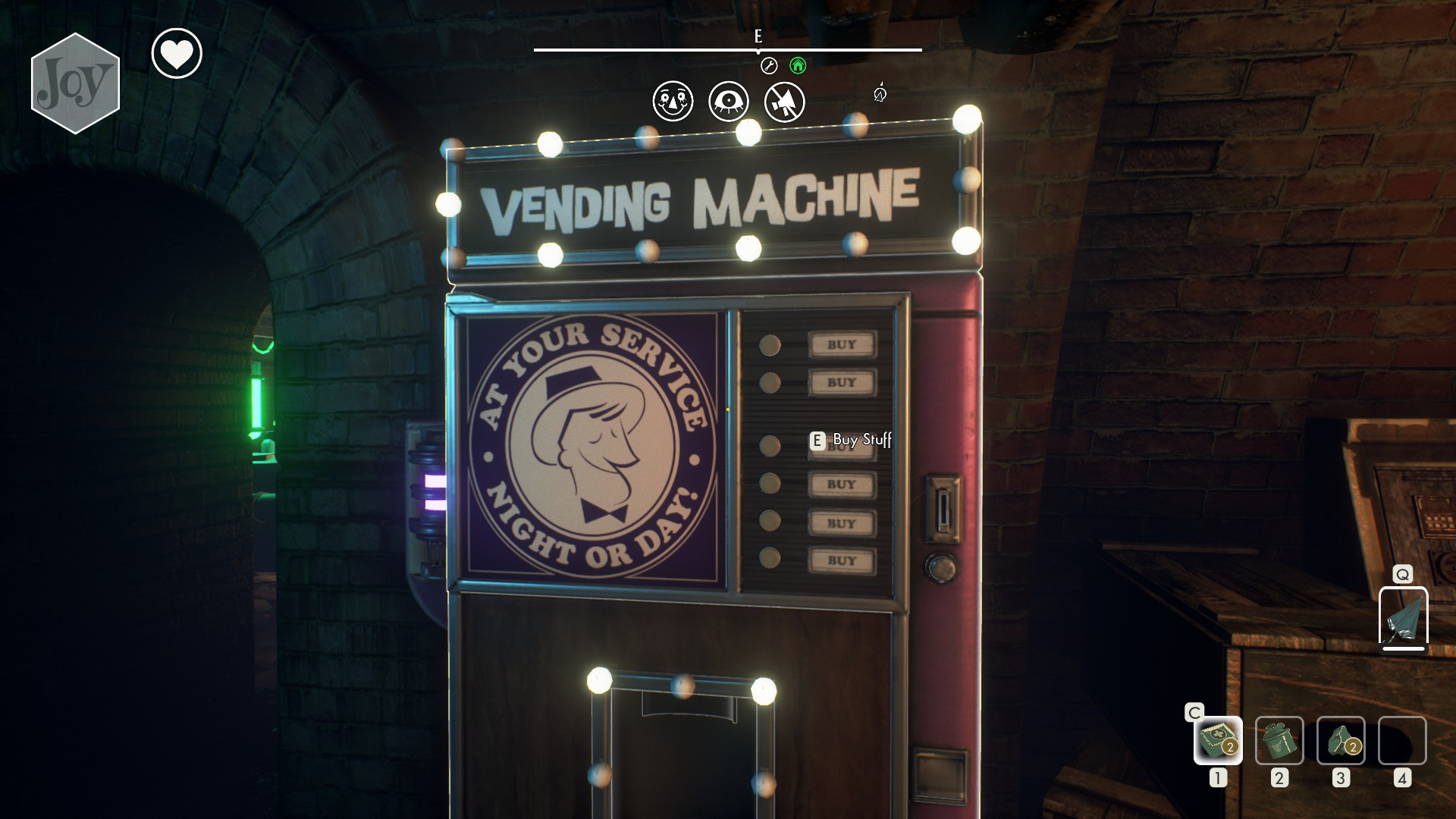
This is compounded further by design choices that seem to be intentionally aimed at making the gameplay more tedious. The game has hunger and thirst which is not something I’m against but they’ve managed to implement in such a way where the penalties aren’t harsh enough to worry about, the bonuses aren’t great enough to bother and food and water itself is so abundant you always have some if you can be fussed going through the process of eating it. The whole system perfectly straddles the line of being just arbitrary enough on every facet that there is no point having it.
The difference between the hunger and thirst bonuses versus their penalties basically boils down to how quickly your stamina meter empties when fighting and sprinting. In combat, if you are running out of stamina, you are fighting badly. The rest of the time the whole system just makes running around from place to place on the map more laborious. The other thing that makes the stupid amount of running about more arduous is the suspicion system.
Running, jumping, bumping into people you go past and travelling at night all make onlookers suspicious which ultimately results in hostilities. About a third of the skills in the skill tree seem to be limiting or the game flat out removes these drawbacks. Unlock the right skills and everyone will ignore you, effectively removing them as a threat and hindrance. They have designed the game’s features in such a way that you are rewarded via your character progression by the disabling of the gameplay features.
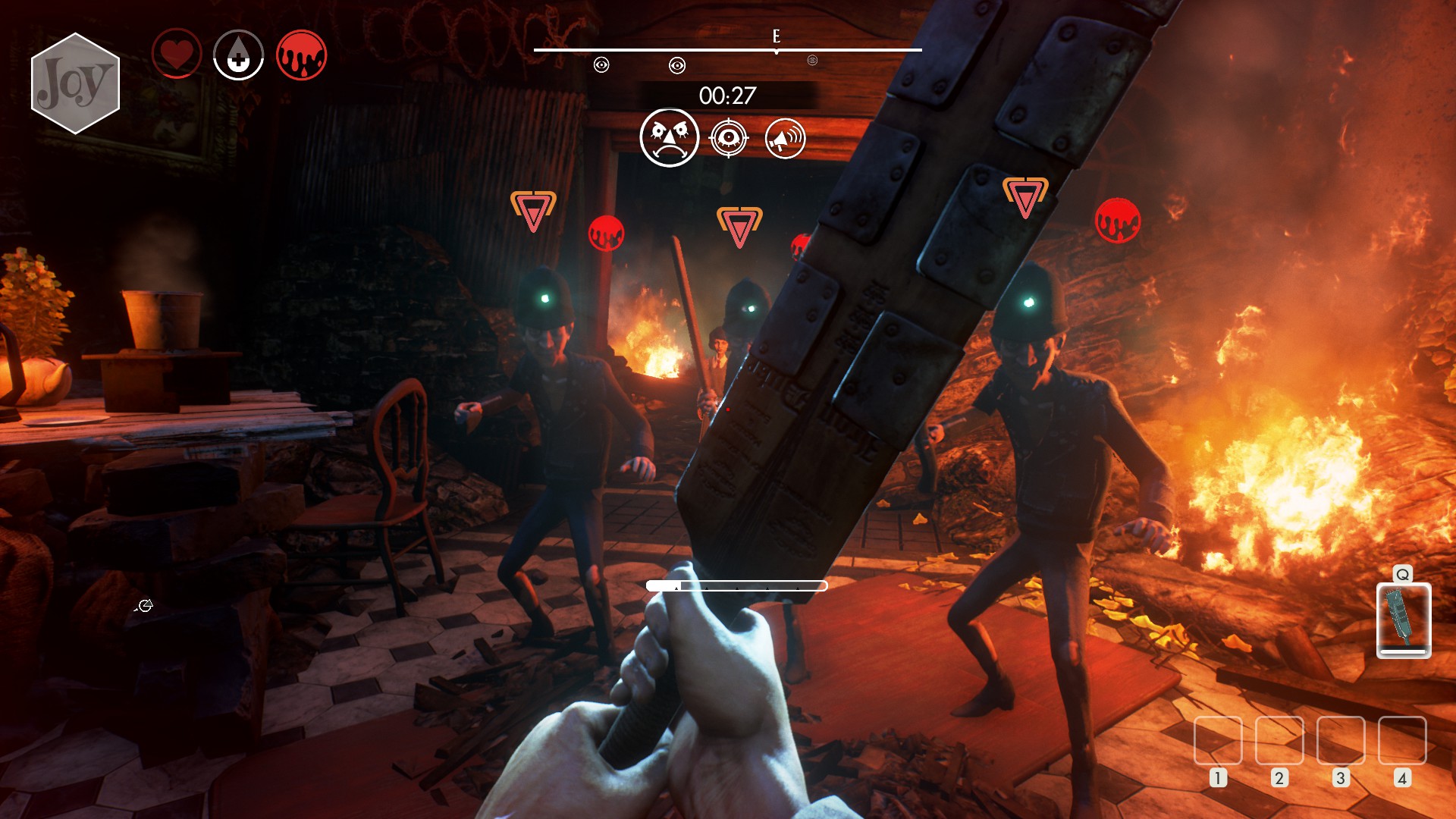
Ironically as the obstacles to travelling freely are removed, the gameplay boils down to travelling about even more as you effectively have less to interact with. That is not to say the game will be free of content. Often enough, you will be forced into a fight with people you have no beef with. The simplistic combat system is adequate enough for these occasional encounters. But the longer and more complicated the fights the more you feel its lack of depth.
The only other thing to say about it is that all through the game you will be making the choice between using lethal weapons which make the fights shorter and easier, or non-lethal weapons which draw things out. I highly approve of games offering non-lethal combat options but once again the classic problem of the game not really making any distinction between a dead NPC and an unconscious one is present. I reloaded a save to find the game had reflagged a bunch of NPC’s I had just previously knocked unconscious as completely dead. Yet, there were no murders on my statistics page so that’s what counts right?
Speaking of choices, I didn’t notice any notable branches in the narrative. On the very rare occasion you are given a choice, it’s binary and you know you are going to want to make the same type of decision at every step of a given playthrough, making those choices as redundant as all the weapons of the opposite type (lethal or non-lethal) to whichever you decided to use on that given playthrough.
Also, on the topic of weapons, it would be remiss of me to point out the Jolly Brolly DLC is basically an outright pay to win. It’s a low tier weapon, but you can upgrade it to a late tier weapon later in the game and more importantly, it’s unbreakable. There is no repair mechanic and you just have to keep picking up the abundance of slightly damaged weapons that drop out of everything to stay armed. I assume weapons degradation is another area where it’s probably implemented in such a way it makes everything more tedious, but the fact I started with an unbreakable weapon that was perfectly adequate and didn’t encourage me to use anything else means I can’t say for certain.

When I say upgrade later that applies to everything. There is a crafting mechanic to the game but again the design decisions are a head-scratcher. One thing I did appreciate is when you need to use a lockpick, so long as you have the materials to make one the game will just consume them and let you go about the lockpicking without having to go into the inventory to make it. Apart from that, the entire crafting system seems to be unnecessary extra inventory management.
Right from the get-go, you will start finding an abundance of stuff and your instincts will be to gather all of it. This will eventually lead to you becoming overloaded. There is universal storage container you unlock access to in each zone and, even more conveniently, crafting material in it can be used even if you are miles away from it. So as soon as you get overloaded you can waddle back to dump everything into it… or since when you load the game you always load next to it you can just save, load, unload and sprint back to wherever you were and save yourself most the trip. This combined with the sheer amount of stuff you can carry raises the question of why there is a system for getting overloaded at all.
Perhaps more interestingly is why so much of the loot in the game is crafting material when for so much of the game the crafting system is limited. As you progress through the game you unlock new crafting recipes, which is rewarding enough a mechanic, but once again we run into the game’s horrible pacing issues. By the time you learn anything worth making you have so many materials that crafting it is a triviality. Once again it is just arbitrary enough you could have replaced the entire crafting system with just having the loot drop as the end product instead of the materials to craft them.
I don’t know what the design goal for any of these systems is supposed to be. On their face, the mechanics look like they are building up to be a survival game, but the game doesn’t get anywhere near crossing the line into that genre. It feels like every system was tacked on just because you need gameplay mechanics to call it a game. They go far enough to keep the game from being called a walking simulator, but not far enough to justify calling it anything other than action adventure.
Coming Apart at the Seams
If the plethora of poor design decisions that lead to really mediocre gameplay weren’t bad enough, they are only made worse by the unending cascade of bugs. Most of the time these are minor animation glitches: the odd rendering error like a texture not loading properly or the procedural generation placing objects poorly, resulting in floating trees or bushes. However, these just foreshadow more severe underlying issues.
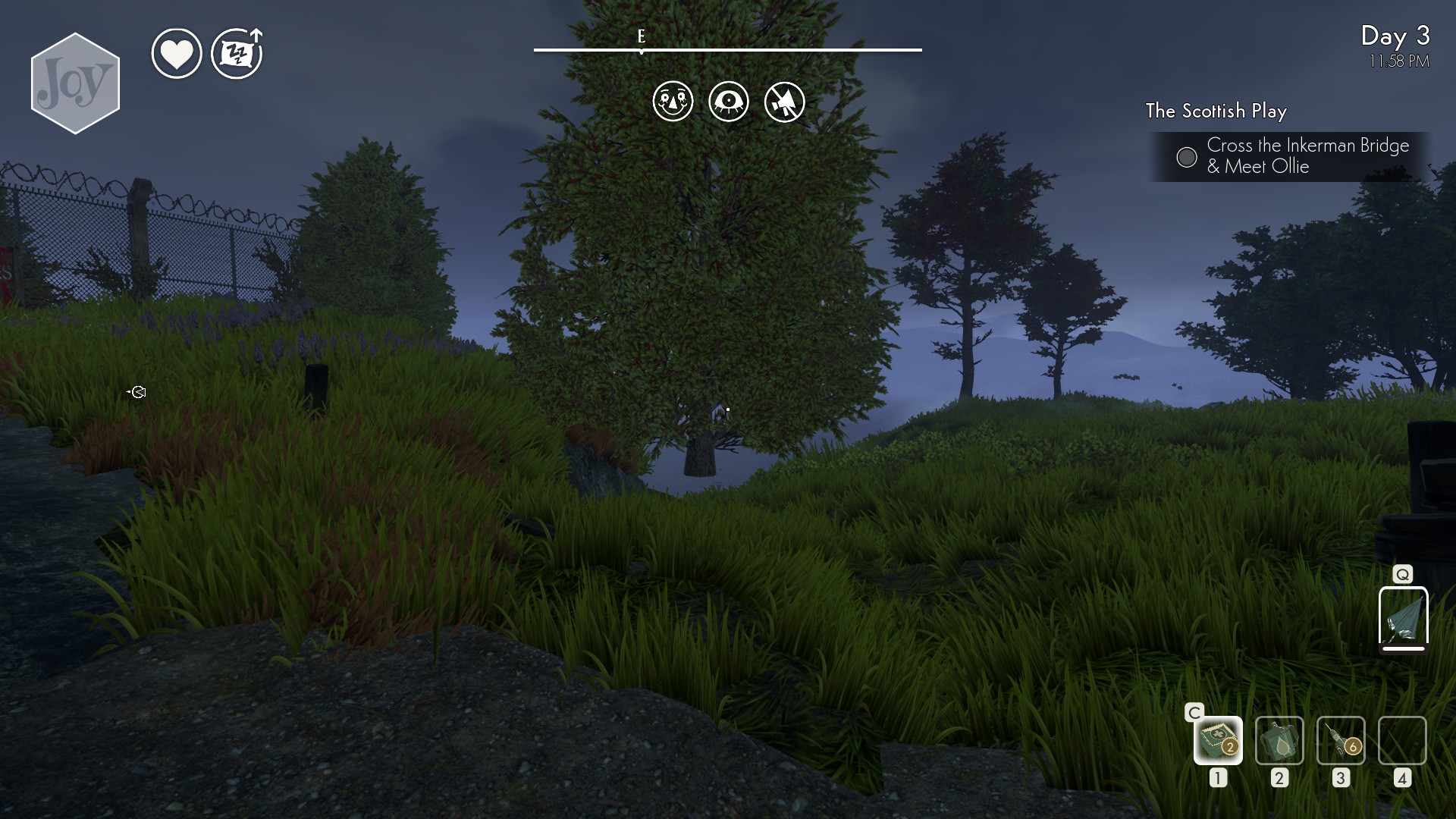
In my first playthrough, I spent the first 6 hours wondering what everyone was so wound up over. The gameplay was nothing special but it was adequate for delivering what was shaping up to be a really well-done narrative. Then I hit my first major bug. A camp I was supposed to break into had its entrances blocked. There were supposed to be two ways to get in and both of them were sealed. After spending some time on the forums I discovered these were supposed to be open and become sealed after completing the quest.
I tried reloading earlier saves and a few other workarounds but eventually, it became clear the only way I was going to be able to complete this main story quest and continue the game was to start a new game from the beginning. It did not take me as long to get to that point the second time but suffice it to say I had a lot less patience for the game’s various hiccups after that. There were a lot of them to boot.
Sometimes they were beneficial. On one occasion I goofed up and one of the more dangerous enemies I’d had to deal with up to that point saw me and moved to engage. After yelling at me for trespassing he drew his weapons and then promptly zipped off the left of my screen at lightning speed as he was transported into a nearby outhouse. After a moment of disbelief, I moved closer the outhouse to investigate. He made a remark about having taken care of his business then teleported in front of me. I got ready to fight, he took two steps forward and fell through the ground never to be seen again. My absolute favourite though was knocking a rat unconscious, then looting the meat off of it. The empty rat then indicates it is unconscious and “empty”.
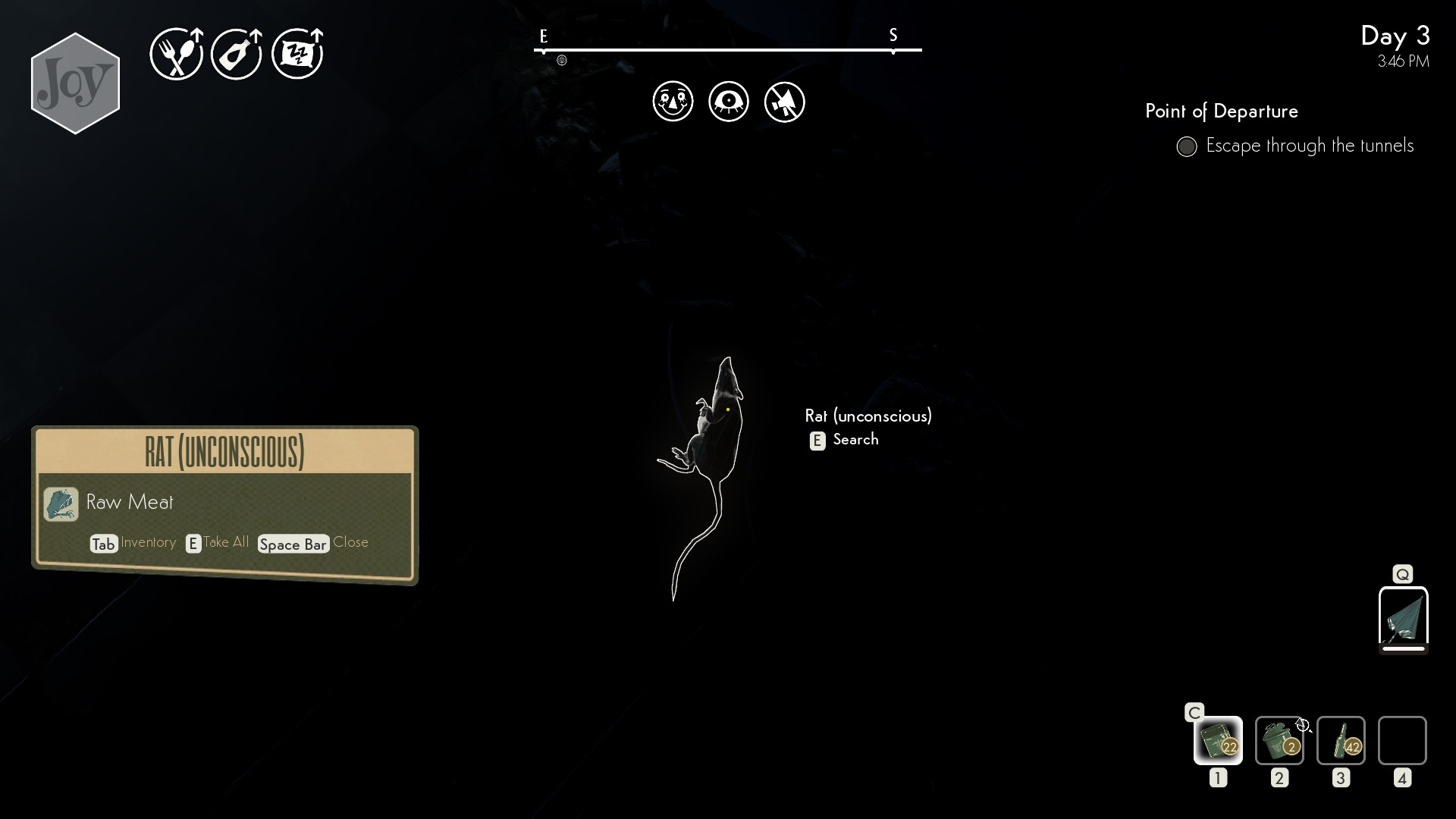
Naturally more frequently occuring bugs would be detrimental with most quest lines developing some kind of issue or another. Sometimes I would lose items, I don’t know how. On a few occasions NPCs I needed to talk to would disappear or be stuck in walls or would otherwise just not acknowledge my existence. One time I was hiding under a table in a train station and the screen went black and newspaper article came up telling me I had drowned. And what array of bugs would be complete without frequent crashes to desktop?
The sad irony is these are exactly the kind of polish issues Early Access exists to prevent. Two years of Early Access with the size of the player base this game had reporting issues really leaves no excuse for the title launching in this condition. I find it difficult to believe that any developer working on the game could play through a single chapter of any given character’s story and not encounter a major bug that needs fixing along the way. The only possible excuse for them proceeding to launch without first fixing these issues is if they just don’t know how.
Verdict
Fellow SaveOrQuit writer rgk pointed out to me Gearbox Publishing is developing something of a track record for releasing unfinished games. Between this, Duke Nukem Forever and Aliens: Colonial Marines I’d have to agree. Gearbox seems to be where incomplete games go to get published before they die. Hopefully, this is a trend that will end here.
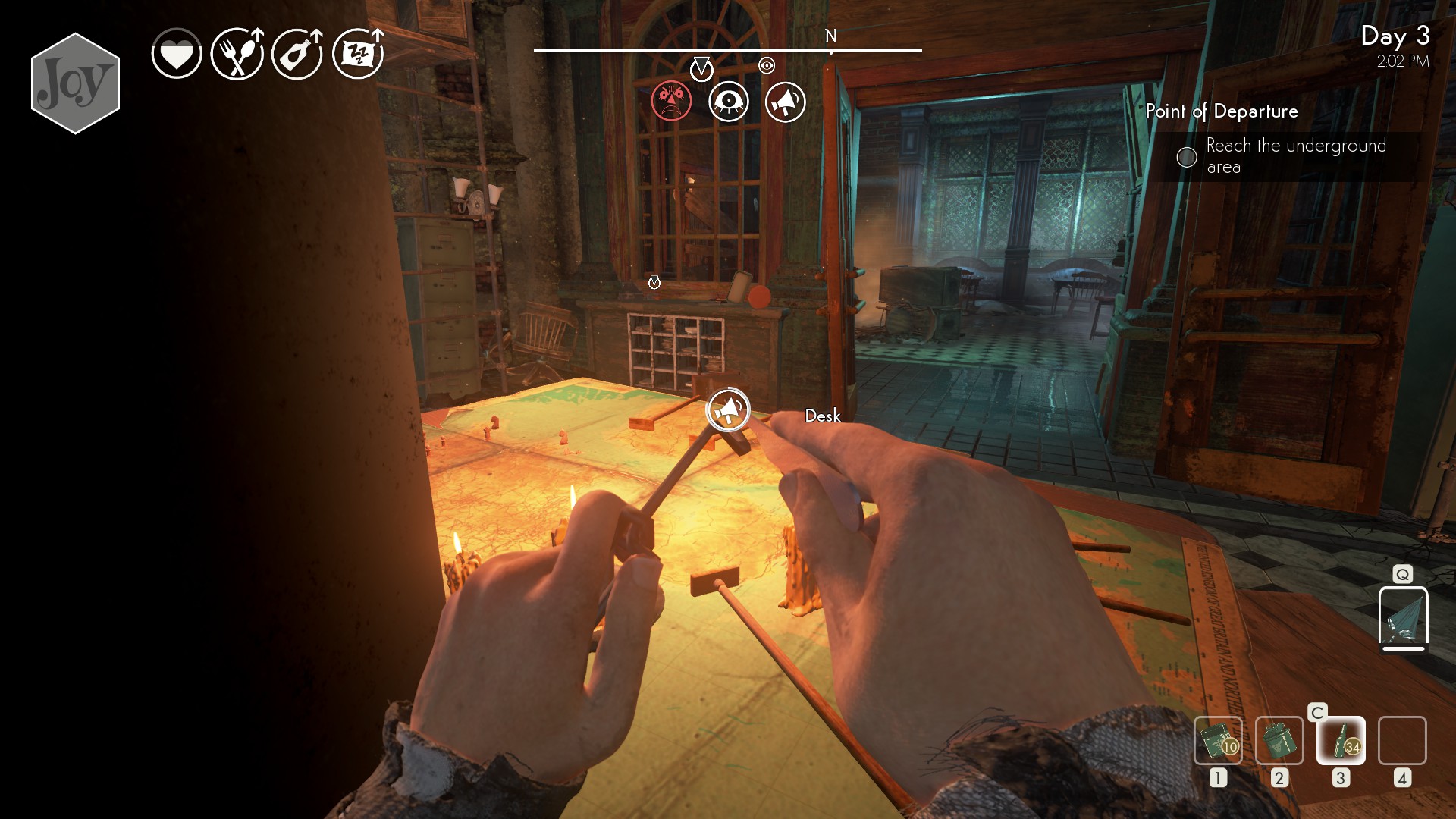
There is a sentiment I occasionally encounter amongst aspiring creatives that they put a lot of work into something and they expect to be paid proportionately to how hard they felt they worked. On its face, that’s a fine sentiment but in truth, you can only really expect to be paid proportionately to similar products on the market. We Happy Few is currently asking for $60 as though it is an AAA title, which of course it isn’t. Even if all the bugs in the game were magically fixed today it is not a $60 game.
No story, no matter how compelling and no art style, no matter how alluring can make up for mediocre gameplay that much. The games current pricing is either ignorance or greed and is way above even the games potential worth. I gave We Happy Few the benefit of the doubt with no expectations and it still let me down. Along with rampant bugs and instability I can’t recommend the game in its current state. With heavy patching, there is something worthwhile to be salvaged here but I would still recommend waiting for a hefty sale.

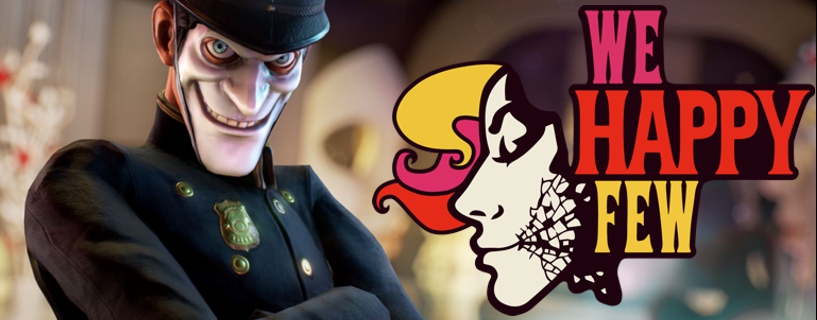









We happy few was a great read, very person connection made during the review, It feels like you had invested in the character and understood the developers message and yet still gave the title a pause due to the incomplete nature of the game. I admire your skills as a writer and the honesty of the review. Excellent job!